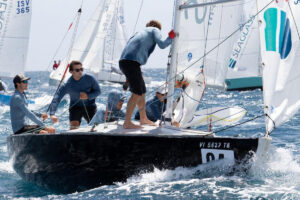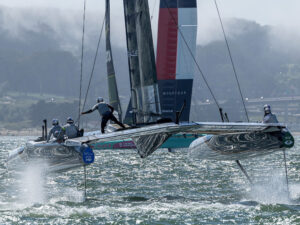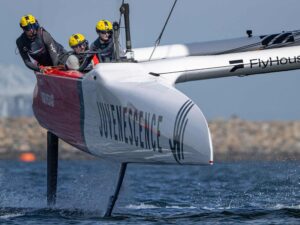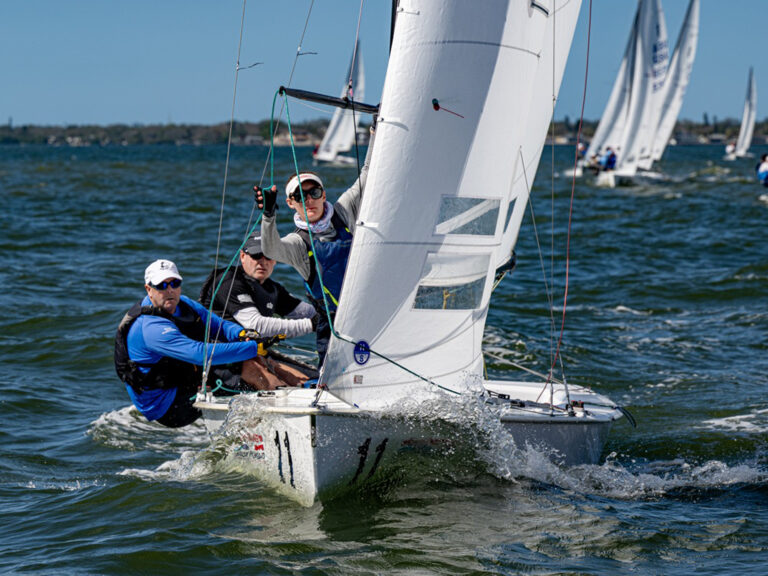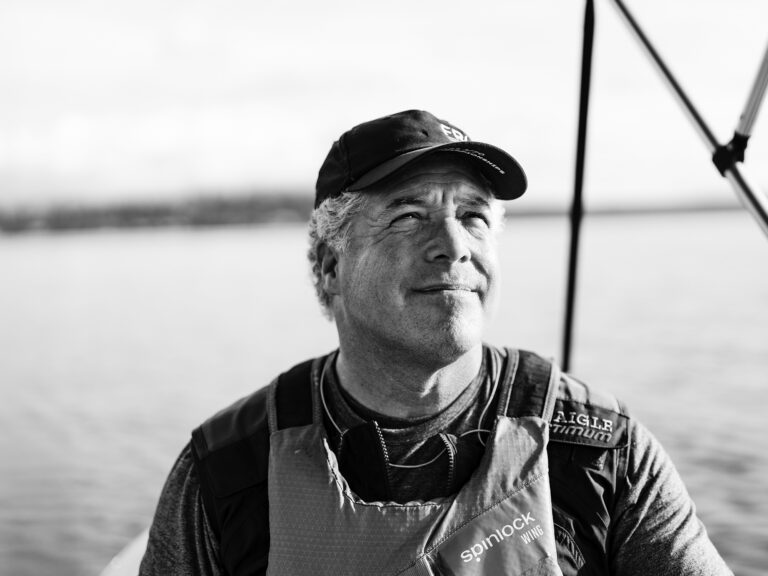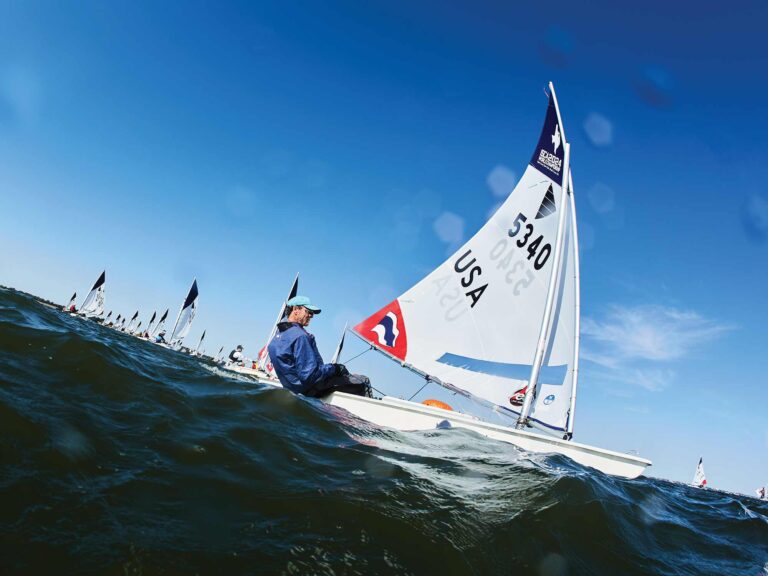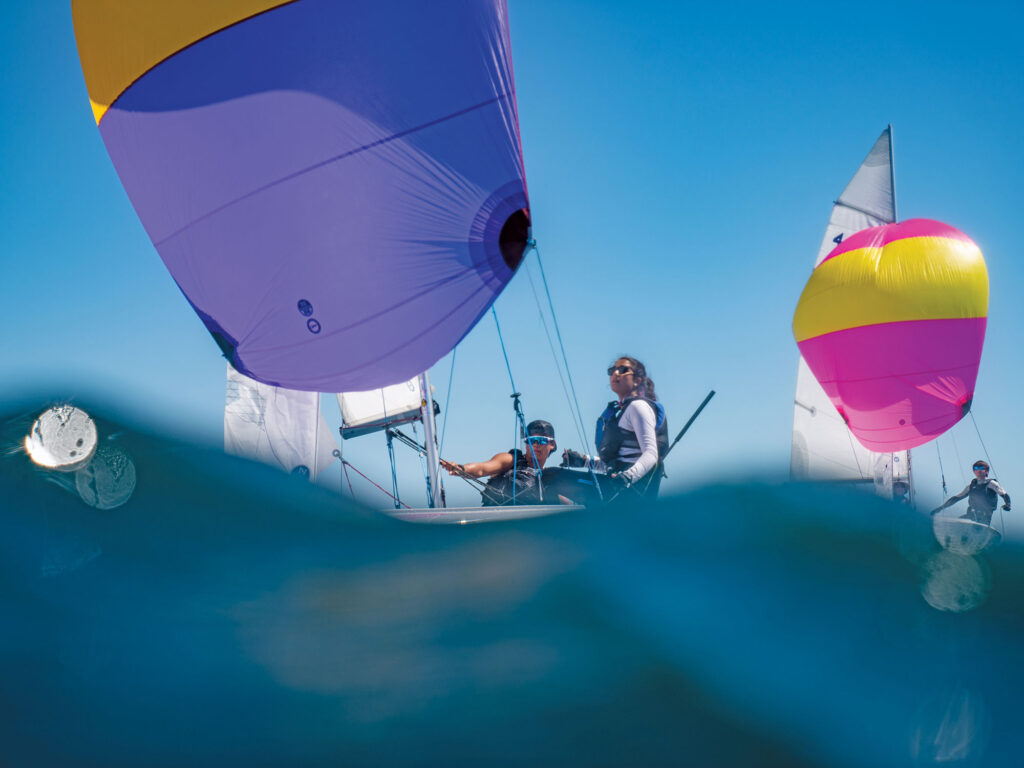
Quick—name two words that have never been paired in previous generations of youth sailing.
Private team.
Anyone with an eye on the game in America—no one else does youth racing the way we do it—knows the phrase. Private teams are a 21st-century phenomenon. Then there are the hybrids. Then there are the tribes of coaches who band together in common cause, and all of them together are woven into the game in multiple hotspots of traditional dinghy racing.
It’s not the old landscape. This is a sampling of the new.
In New York, the Long Island Sound Opti Team was born to support kids who want more than the short summer seasons that their yacht clubs can offer. LISOT is a stable, structured nonprofit. Elsewhere, the acronyms and spinoffs have become an adventure of their own. Coaches are combining their resources to optimize impact. Those efforts do not always produce private teams, exactly, but they’re not your father’s yacht-club teams either.
LISOT is the big name, and unique. Much of its success is owed to stability, and that in turn comes from dads who did not move on when their kids grew up—for example, Michael Rudnick and Douglas Wefer. As Rudnick says: “Any yacht club on Long Island Sound probably offers seven weeks of sailing in the summer, taught by a college sailor. For some kids, that’s enough. But every club has one, two, maybe three kids who want more. And we have 60 clubs in near proximity in our junior sailing association. LISOT brings those kids together in a critical mass, which makes it possible to hire full-time coaches and own six RIBs and the tools to run a program.”
LISOT takes all comers, with no tryouts, and it migrates. “We don’t want a permanent base because then we would be favoring that yacht club. Anyone who had to commute would be disadvantaged,” Rudnick says.
In Wefer’s view: “The coming and going of teams in other areas demonstrates the need for a critical mass. When a program is driven by a few involved parents, it can succeed while they’re involved and then disappear when the kids move on. Michael and I have kept at this well beyond our own kids’ time, to oversee it and perpetuate it. But, geographically, there are parts of this spread-out country where it would be impossible to achieve critical mass and consistently do what we do.”
As its organizers watched LISOT’s early Opti kids grow out of Optis, in 2008 Kiwi coach Steve Keen came aboard to coach i420s and Club420s, with an emphasis on the international version. Abroad, i420s are simply the 420. C420s are ubiquitous in this country, built to be simple and robust for clubs and college teams. The i420 has more strings and more points of control. It shares the characteristics of more sophisticated boats, and with that, Wefer says, “Keen saw the i420 as a more effective teaching platform.”
He may have something there. The Cowles twins, Emma and Carmen, came to LISOT in 2012 by way of Larchmont YC and sailed Optis for three years, with key wins. In 2015, they joined Keen’s 420 squad, and in 2018, after winning their second Youth Worlds title, they were jointly declared US Rolex Yachtswomen of the Year. Their story continues, but…
What is a “private team?”
What has developed on both coasts, regionally and nationally, are systems of private coaching that have varying relationships with yacht clubs. They are built from college coaches or high school coaches, sailors join, and they’re called a team. At the 2024 C420 North Americans, only one boat in the top 10 was registered solely from a yacht club. One was registered solely from an entity that is not a yacht club. Eight were co-registered from yacht clubs—in order of first appearance: SoCal (2), 73 Sailing (6), One United (1).
Most, but not all, of the action is in C420s, and Matt Peter of One United Sailing asks, “What happened to a Chicago yacht club that used to send eight boats around the country? What happened to an Annapolis yacht-club team of 20 kids?”
Having coached at Chicago, Navy and URI, Peter could probably produce some answers if we lined up the beers for a long night. He is now in Southern California as sailing director of Long Beach YC, which, its website declares, has “formed a strategic partnership with One United in order to provide our membership with access to a network of coaches and athletes on a National scale. For those who are seeking the most competitive one-design racing available, this will serve as a gateway to the highest-level coaching and training opportunities across a number of classes and disciplines.”
In this new order, a key theme resonates with LISOT, assembling a critical mass. One United (Peter’s Florida-based partner is Esteban Forrer) has “a Rolodex of coaches,” mostly from colleges, who rally up for national regattas, also for clinics, which Peter points to for offering the most value.
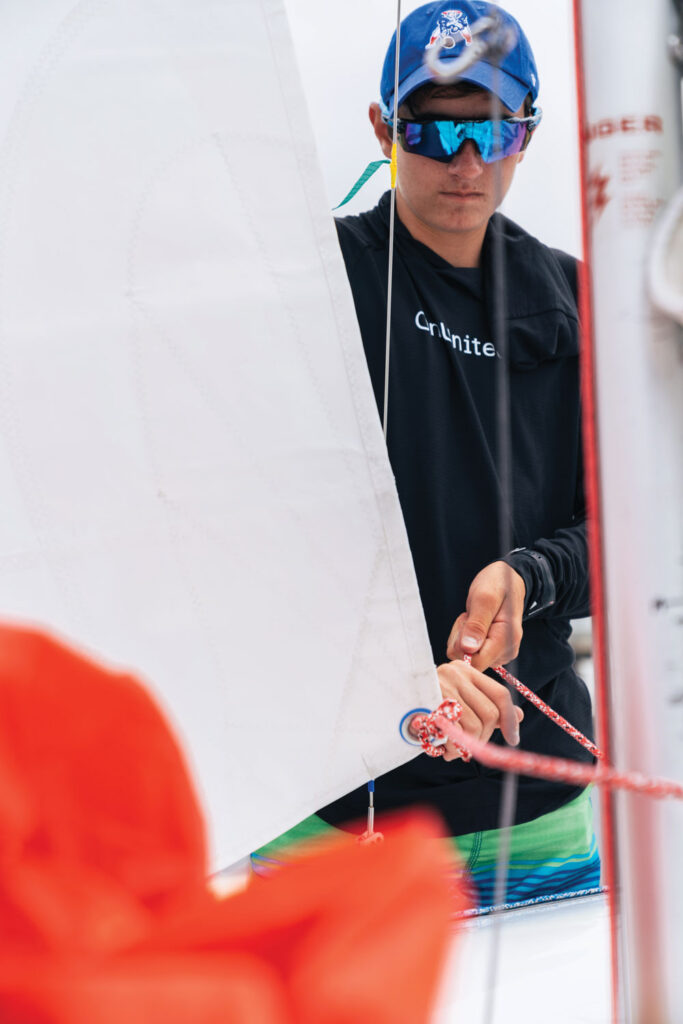
The model is to partner with a yacht club, with Coral Reef YC in Miami being another example. “CRYC doesn’t run a travel team, but they can count on four to five boats’ worth of motivated kids,” Peter says. For big C420 regattas with three flights, multiple coaches matter, but it also matters to have the home coach. “Ian Robinson coaches for CRYC, so he will come with us as One United. Ian knows his own kids. The yacht club gets its burgee pictures—that’s your ROI on a junior program—and they’ve spent zero dollars to get those photos.”
Jeff Bonanni calls his 73 Sailing “a national youth sailing team.” Based in New Jersey by way of a sojourn in Southern California, he recalls, “Aubrey Mayer was coaching in Newport Beach, and he invited me out west to coach some kids through NB4T, combining both coasts. When he left, I became the director of NB4T. Eventually I split off, came back east, and formed 73 Sailing.”
NB4T was briefly ubiquitous, then disappeared.
Bonanni says: “Last year, 73 Sailing had 200 kids in clinics or racing or both. As far as I can tell, we are the largest fully private team in the country. We have trusted coaches who combine forces for clinics or big regattas, and if a kid flies in from wherever without a coach or a home team, that kid is not alone.”
Around Newport Beach, Team SoCal has replaced NB4T as the regional team, with notches in their gun. Cooper Reeves and Matthew Commons won the 2024 NAs, registering Team SoCal behind their home California YC. Gabriel Sequeira is the coach there, and the native of Brazil continues to learn his way around. “In Brazil, it’s all about the yacht clubs,” he says. “Here, some clubs don’t have many kids, or they can’t afford to support high-level sailing. Private teams seal that gap. The core idea of SoCal is to have more kids practicing together. It’s not a private team where we’re charging the kids. We’re just coaches working together.
“I think some private teams were organized for the wrong idea of getting kids into college—that you have to sail only C420s and know a college coach. But if you have the grades and you’re good on the water, it won’t matter what you sail. At Cal YC, we have four i420s, and I want all my kids to sail both boats. In the US, you need C420s for big fleet experience, but i420s are more technical and tweaky, and they teach boat prep and tuning.
“Knowing I wouldn’t have enough i420 sailors for the Orange Bowl, I told them to go with Udi Gal and the High Performance Center. Udi teaches out of Tiburon, on San Francisco Bay, and without Udi, there would be no i420 program in Northern California. Udi and I, with Susannah Chapman at Alamitos Bay, are trying to develop an i420 fleet.”
Meanwhile, in a world where too much is happening at once, Matt Peter, 32 miles south of Cal YC at Long Beach YC/One United, is developing a 29er fleet alongside the club’s traditional Sabots for their beginners (no Optis) and the predictable etceteras.
And shifting again to the community around Newport Beach, there is Bahia Corinthian YC, where head coach Greg Dair now shares SoCal with Sequeira and others, and explains that “NB4T never had a legitimate structure, but there was a need. At major regattas with three flights, you really do want two coaches on the starting line, one coach to four boats. Ideally, you build a team of 24 boats, and at practices, you bring together kids from all your clubs, and you have at least 20. I have no ambition to see SoCal grow beyond that.”
SoCal is not a private team, Dair says. “We’re not trying to steal sailors from the clubs. We tell our sailors that their first loyalty is to their own clubs. We’re the coaches for those clubs, working on top of our regular jobs to fulfill a mission and taking it one regatta at a time.”
That maps the landscape, with data missing, so it’s not a map for navigation. All these coaches work with their students on process, process, process, but in the grand scheme of what to do and how, process in youth coaching remains an adventure in invention. And notice, I didn’t mention foiling until the very last sentence.
Note: The article has been updated to correct the spelling of Michael Rudnick.

